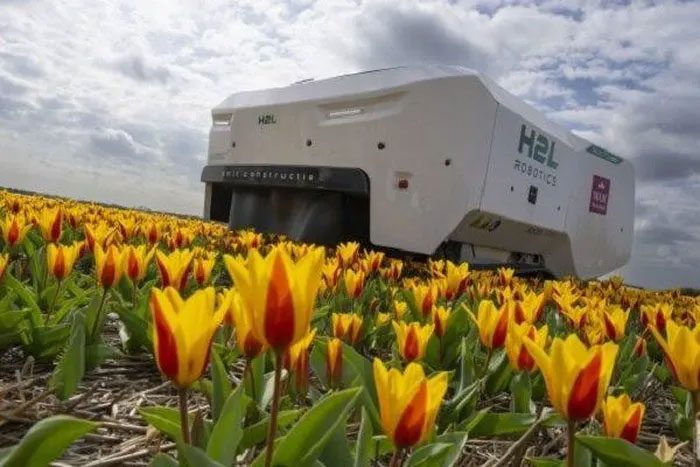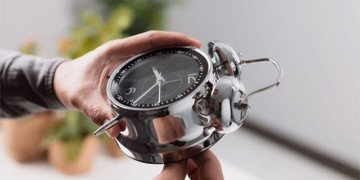Visiting fields to search for disease-stricken flowers is an incredibly laborious task for farmers. However, farmers work every day of the week, including nights, without ever “complaining.”
On a breezy spring morning, robots move along rows of yellow and red flowers, inspecting each plant and addressing any disease cases to prevent the spread of viruses. These viruses hinder the growth and development of plants, resulting in smaller and weaker flowers. They also weaken the bulbs, preventing them from blooming.

The robot travels at a speed of 1 km/h, searching for red stripes forming on leaves in cases of infection.
To combat disease outbreaks, 45 robots have been deployed across the Netherlands as the weather warms up and flower farmers prepare for peak season. One of the farmers utilizing this technological weapon is Allan Visser.
“With the cost of the robot (185,000 euros), you could buy a very nice sports car, but I chose the robot because a car can’t help me eliminate diseased tulips. The equipment is indeed quite expensive, but the number of people who can identify diseases on flowers is decreasing,” Mr. Visser shared.
Much slower than a sports car, the robots move at a speed of 1 km/h, searching for red stripes forming on leaves in cases of infection. Mr. Visser explains: “This is precision agriculture. The robot has a camera at the front that takes thousands of pictures and then identifies diseased tulips using an AI model. The device learns how to recognize diseases and then takes action.”
Physicist Erik de Jong, who works for H2L Robotics (the robot manufacturing company), stated that the AI responsible for identifying diseased tulips also has GPS coordinates to accurately locate which flowers need treatment. He added: “The knowledge we input into the AI model serves as the ‘heart’ of the robot. This knowledge comes from tulip farmers.”





















































